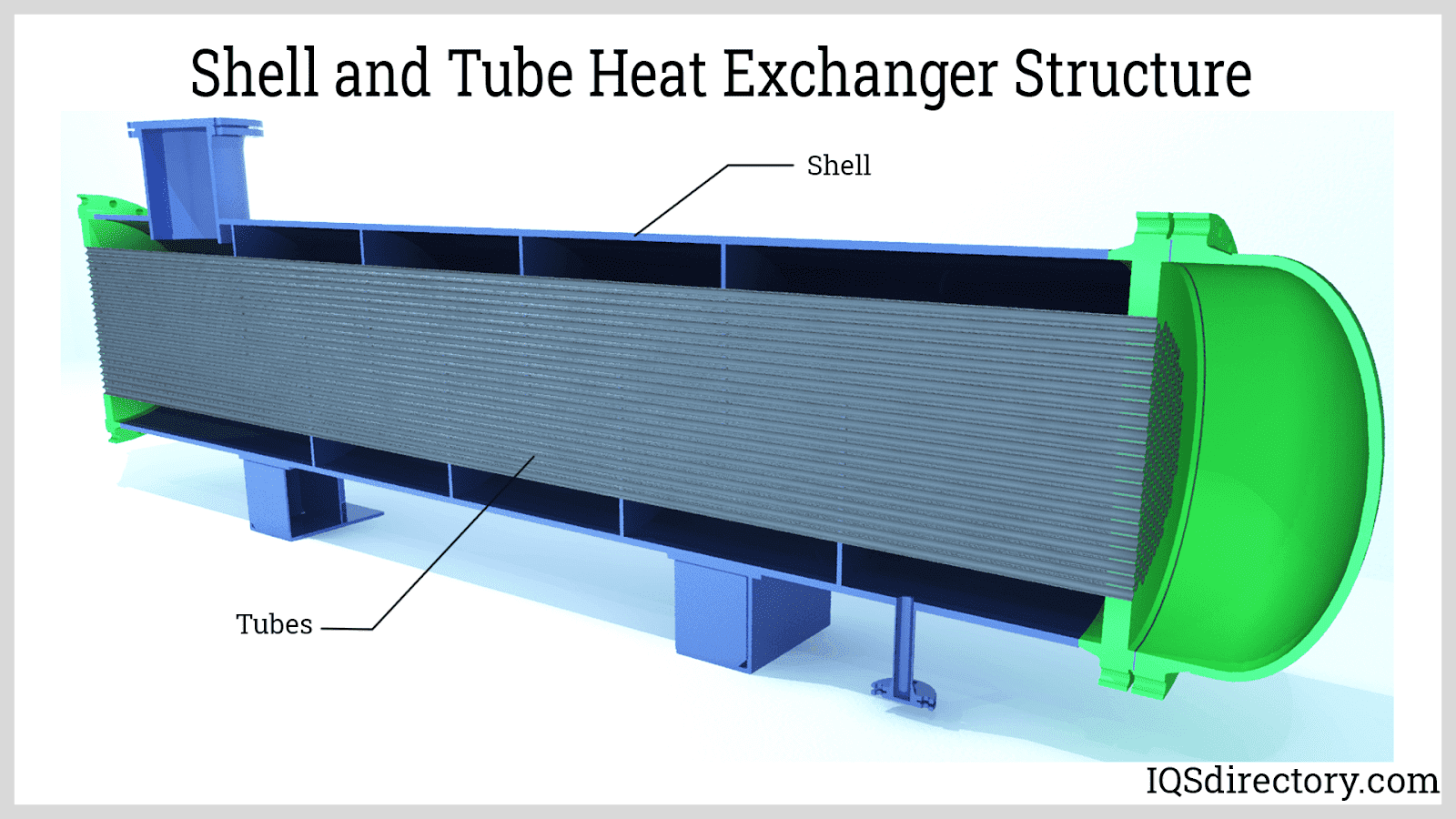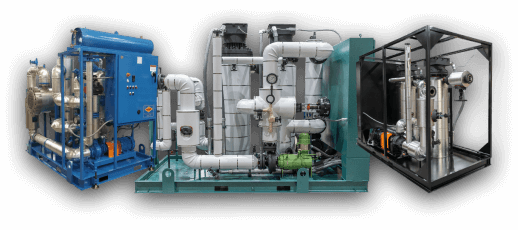DVS Heat Transfer Systems: The Future of Energy-Efficient Industrial Heating Solutions
Wiki Article
The Function of Heat Transfer Solutions in Sustainable Energy Solutions for the Future
Heat transfer systems are essential in the quest for lasting power options. They enhance thermal energy management, enhancing the performance of eco-friendly innovations. By employing systems like radiation, conduction, and convection, these systems reduce energy losses. Their duty in solar thermal and geothermal applications is particularly substantial. As advancements arise, the capacity for more improvements raises vital concerns about future energy strategies. What developments will form the landscape of sustainable power?Recognizing Heat Transfer Solutions

The Significance of Thermal Power Administration
Efficient thermal energy administration is crucial for optimizing energy effectiveness and reducing waste in different systems. By managing temperature and maximizing Heat transfer procedures, companies can considerably lower energy intake and functional costs. Efficient administration includes the implementation of sophisticated technologies and practices that keep track of and control thermal problems within systems, making certain that energy sources are made use of efficiently. Additionally, appropriate thermal energy monitoring adds to reducing greenhouse gas emissions, straightening with worldwide sustainability objectives. It additionally improves system integrity and efficiency, leading to enhanced item quality and longer tools life-span. Ultimately, prioritizing thermal energy management is a vital action in the direction of developing a lot more sustainable power remedies and fostering an accountable strategy to energy consumption in domestic and industrial contexts.Applications of Heat Transfer in Renewable Power
While numerous renewable resource sources assure sustainability, the effective application of Heat transfer plays a vital role in their efficiency. In wind energy systems, Heat transfer is used for wind turbine element cooling, enhancing performance and longevity. Geothermal power relies upon reliable Heat exchange between the planet's subsurface and the fluid flowing in the system, making best use of power removal. Biomass energy processes likewise take advantage of Heat transfer, as it helps in converting natural products right into functional fuel via pyrolysis and gasification. In addition, in hydropower, maintaining optimal temperatures in storage tanks can enhance energy result. Each of these applications demonstrates the vital importance of Heat transfer systems in enhancing renewable power technologies, inevitably adding to an extra sustainable power future.Enhancing Solar Thermal Power Effectiveness
As solar thermal power systems continue to progress, enhancing their performance has actually ended up being necessary for maximizing power outcome. Advances in Heat transfer innovations, such as improved thermal storage space materials and cutting-edge Heat exchangers, play a substantial role in improving efficiency. By utilizing sophisticated products that have exceptional thermal conductivity, systems can transfer and capture Heat more successfully. Additionally, integrating tracking systems that comply with the sunlight's course guarantees that collection agencies obtain perfect solar direct exposure throughout the day. Utilizing nanotechnology in solar absorbers can additionally boost power absorption rates. Moreover, including automated control systems helps regulate temperatures and manage power distribution successfully, bring about reduced losses and enhanced general system effectiveness. These enhancements pave the method for even more sustainable solar thermal power services in the future.Geothermal Home Heating: A Sustainable Solution
Geothermal home heating provides a feasible choice for sustainable energy, providing significant ecological benefits through lowered greenhouse gas discharges. Its performance and cost-effectiveness make it an eye-catching choice to typical furnace. Obstacles connected to implementation must be resolved to maximize its possible impact.Environmental Benefits of Geothermal
Traditional heating approaches add considerably to greenhouse gas exhausts, geothermal heating provides an engaging option that decreases environmental influence. By using the Earth's interior Heat, geothermal systems utilize a renewable resource resource, substantially decreasing dependence on nonrenewable fuel sources. This method creates minimal carbon emissions, making it a cleaner choice for business and property heating. Additionally, geothermal systems promote power effectiveness, as they need less power contrasted to traditional heater. DVS Heat Transfer Systems. The utilization of geothermal energy additionally helps in reducing air pollution, enhancing neighborhood air quality and public health and wellness. As a lasting remedy, geothermal home heating sustains environment adjustment mitigation efforts, positioning itself as an essential component in the link shift in the direction of a greener futurePerformance and Cost-Effectiveness
How does geothermal heating measure up in terms of efficiency and cost-effectiveness compared to traditional heating unit? Geothermal heating shows premium performance, usually accomplishing a coefficient of efficiency (POLICE OFFICER) of 3 to 5, indicating it creates three to five units of Heat for every system of electrical energy taken in. This effectiveness equates into lower operating expense, specifically in regions with stable geothermal sources. Preliminary setup costs can be more than standard systems; nonetheless, lasting cost savings on power bills and minimized upkeep expenditures can offset these ahead of time financial investments. In addition, many governments incentivize geothermal systems with rebates and tax obligation credit ratings, improving their cost-effectiveness. Overall, geothermal heating arises as a financially practical and lasting alternative to even more conventional heating options.Execution Obstacles and Solutions
Many challenges can restrain the extensive execution of geothermal heating systems, regardless of their clear benefits as a lasting energy remedy. High first setup costs frequently prevent homeowners and capitalists, making financing a significant barrier. Furthermore, the geographical limitations of appropriate geothermal websites restrict ease of access in specific areas. Regional laws and permitting processes can additionally complicate job development, causing hold-ups. Public recognition and understanding of geothermal systems remain low, hindering acceptance. To resolve these challenges, targeted education campaigns can improve public expertise, while federal government incentives can reduce financial burdens. Collaborating with neighborhood authorities to simplify guidelines might facilitate smoother project approvals, eventually advertising the fostering of geothermal home heating as a viable, sustainable power option.Technologies in Heat Transfer Technologies
Technologies in Heat transfer modern technologies play an essential duty in improving energy effectiveness and sustainability. Advanced Heat exchangers and phase modification materials go to the forefront of these developments, using substantial improvements in thermal monitoring. These innovations not just maximize energy use yet likewise add to decreasing environmental impact in various applications.Advanced Heat Exchangers
Advanced Heat exchangers play an essential duty in improving energy efficiency throughout different applications in sustainable power services. These devices promote the transfer of Heat between two internet or even more liquids, substantially minimizing energy intake in procedures such as industrial home heating, cooling, and power generation. Innovations in products and design, such as making use of nanofluids and small arrangements, have brought about boosted thermal performance and reduced dimension requirements. Furthermore, advancements in electronic surveillance and control systems permit optimized operation, more boosting effectiveness. By lessening waste Heat and maximizing power recovery, advanced Heat exchangers add to reduce carbon impacts and sustain the shift towards environmentally pleasant innovations. Their proceeded growth is vital for achieving global energy sustainability objectives.
Stage Modification Materials
The integration of phase change products (PCMs) right into Heat transfer modern technologies represents a considerable advancement in energy administration and performance. PCMs absorb and release thermal energy throughout their stage adjustments, enabling efficient temperature level regulation in building materials and energy systems. By keeping excess Heat during optimal durations and releasing it when demand increases, PCMs contribute to pack moving and power preservation - DVS Heat Transfer Systems. This capability enhances the performance of renewable resource systems, especially in solar thermal applications. In addition, PCMs can boost the thermal convenience of interior settings, reducing reliance on conventional heating and cooling methods. As developments in PCM formulas remain to arise, their function in sustainable energy services is positioned to grow, supplying encouraging avenues for future study and application
Future Potential Customers for Heat Transfer in Sustainable Power
As the demand for lasting power services remains to climb, the role of Heat transfer systems is ending up being significantly important fit future technologies. Developments in products and designs are anticipated to boost efficiency in discover this Heat transfer, decreasing energy losses in various applications. The combination of sophisticated thermal storage systems, such as phase change products and thermochemical storage space, will enable much better management of energy resources. Research into nanofluids and biomimetic Heat exchangers may even more enhance thermal performance. The fostering of clever modern technologies will certainly permit for real-time surveillance and adaptive control of Heat transfer procedures. These innovations are positioned to greatly add to the total effectiveness and sustainability of power systems, leading the way for a much more energy-efficient future.Frequently Asked Questions
Just How Can People Carry Out Heat Transfer Systems in the house?

People can carry out Heat transfer systems in the house by mounting energy-efficient devices, using radiant heat, and enhancing insulation. These measures improve energy performance, reduce costs, and promote sustainable techniques in household environments.

What Are the Prices Connected With Setting Up Heat Transfer Equipments?
The costs related to installing Heat transfer systems differ extensively, generally encompassing devices, setup labor, and maintenance. Variables such as system type, home size, and local policies considerably influence the overall expenditure entailed.Are There Government Incentives for Heat Transfer System Installations?
Government incentives for Heat transfer system installments differ by area and can include tax rebates, credit histories, and grants. These economic advantages aim to encourage fostering, eventually promoting power effectiveness and decreasing environmental impact within areas.Exactly How Do Heat Transfer Solutions Impact Power Expenses?
Heat transfer systems especially influence power expenses by maximizing energy performance. By enhancing the transfer of Heat, these systems lower energy intake, bring about lower energy costs and developing a more sustainable technique to energy monitoring.What Maintenance Is Needed for Heat Transfer Solutions?
Upkeep for Heat transfer systems consists of routine assessments, cleansing of elements, examining liquid levels, making certain appropriate insulation, and changing used parts. These tasks assist preserve efficiency, stop break downs, and prolong the system's functional life-span.These systems facilitate the motion of thermal power from one tool to another, making it possible for the transfer of Heat for energy, home heating, or air conditioning generation functions. Geothermal energy relies on efficient Heat exchange between the earth's subsurface and the fluid distributing in the system, taking full advantage of power extraction. Additionally, geothermal systems promote energy effectiveness, as they call for much less power compared to traditional heating systems. Advanced Heat exchangers play an essential role in enhancing energy efficiency throughout various applications in sustainable energy solutions. Heat transfer systems notably influence energy bills by enhancing energy effectiveness.
Report this wiki page